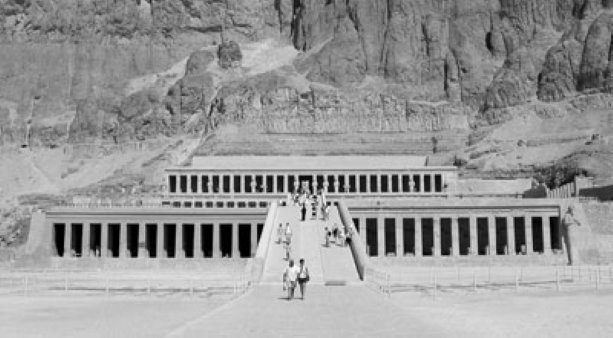A mummy found a century ago has been identified as the remains of Pharaoh Queen Hatshepsut, who ruled over Egypt during the 15th century B.C., Egyptian authorities say.
Her mummy identified after a century
CAIRO, EGYPT
A mummy found a century ago has been identified as the remains of Pharaoh Queen Hatshepsut, who ruled over Egypt during the 15th century B.C., Egyptian authorities say.
Hatshepsut was known for dressing like a man and wearing a false beard. But when her rule ended, all traces of her mysteriously disappeared, including her mummy.
She was one of the most prolific builder pharaohs of ancient Egypt, commissioning hundreds of construction projects throughout both Upper and Lower Egypt. Almost every major museum in the world today has a collection of Hatshepsut statuary.
Discovered in 1903 in the Valley of the Kings, the mummy was left on site until two months ago when it was brought to the Cairo Museum for testing, Egypt’s antiquities chief Zahi Hawass said.
DNA bone samples taken from the mummy’s pelvic bone and femur are being compared to the mummy of Queen Hatshepsut’s grandmother, Amos Nefreteri, said Egyptian molecular geneticist Yehia Zakaria Gad, who was part of Hawass’ team.
While scientists are still matching those mitochondrial DNA sequences, Gad said preliminary results were “very encouraging.”
Hawass also said that a molar tooth found in a jar with some of the queen’s embalmed organs perfectly matched the mummy.
“We are 100 per cent certain” the mummy belongs to Hatshepsut, Hawass told Associated Press.
Hawass has led the search for Hatshepsut since a year ago, setting up a DNA lab in the basement of the Cairo Museum with an international team of scientists. The study was funded by the Discovery Channel, which is to broadcast an exclusive documentary on it in July.
Molecular biologist Paul Evans of the Brigham Young University in Provo, Utah, said the discovery could indeed be remarkable.
“Hatshepsut is an individual who has a unique place in Egypt’s history. To have her identified is on the same magnitude as King Tut’s discovery,” Evans told The Associated Press by phone from Utah.
Hatshepsut is believed to have stolen the throne from her young stepson, Thutmose III.
Her rule of about 21 years was the longest among ancient Egyptian queens, ending in 1453 B.C.
Hatshepsut’s funerary temple is located in ancient Thebes, on the west bank of the Nile in today’s Luxor, a multi-collonaded sandstone temple built to serve as tribute to her power. Surrounding it are the Valley of Kings and the Valley of the Queens, the burial places of Egypt’s pharaohs and their wives.
But after Hatshepsut’s death, her name was obliterated from the records in what is believed to have been her stepson’s revenge.
British archaeologist Howard Carter worked on excavating Hatshepsut’s tomb before discovering the tomb of the boy-king, Tutankhamun, whose treasure of gold has become a symbol of ancient Egypt’s splendour.
Associated Press











Recent Comments
comments for this post are closed